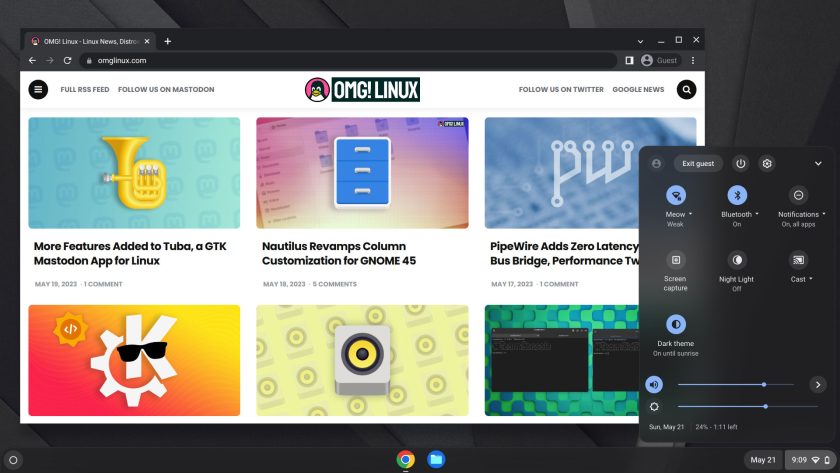You Can Now Make ChromeOS Flex USB Installers on Linux
It’s now possible to make a ChromeOS Flex USB on Linux.
You thought you could already?
So did — but turns out we couldn’t.
As noted by our friends at Neowin, until recently Google only made it possible to create a Chrome OS Flex USB using the ChromeOS Recovery Utility, and that app only officially supports Windows and macOS.
Yeah, they didn’t support their own Linux-based ChromeOS!
Thankfully this is no longer the case.
Google now provide a direct download of the ChromeOS Flex installer image. This image can be written/flashed/burned to a USB flash drive on Linux using a GUI app like Balena Etcher or, for those more comfortable at the command line, the trusty dd tool.
The image itself is provided as a ZIP that needs to be unpacked to get at the BIN file inside. The extracted BIN is around 6 GB in size so any USB you want to flash it to needs to be at least 8 GB.
The process from there is simple.
- Download the ChromeOS Flex image
- Extract the ZIP download to get a BIN file
- Insert a USB of 8GB or greater in your computer
- Open Balenda Etcher
- Select the Chrome OS Flex BIN file
- Select your USB (double check)
- Hit write/flash
Prefer the command line?
Flash it using dd:
sudo dd if=flex.bin of=/dev/sdN bs=4M status=progressWhere flex.bin is the name of the downloaded installer file, and /dev/sdN is the USB drive identifier (you can find this out using the Disks Utility app, it’s often sdb – omit the number). The bs value improves the flash speed, while status keeps you informed as it writes.

Flashing Chrome OS Flex will take a bit of time, especially if you use an older (and slower) USB 2.0 drive. When running the dd command do be patient – it may look like the process has stalled or failed at first but it hasn’t, you just need to be patient.
Once done, use the USB to boot Chrome OS Flex on any PC or laptop with at least 4GB of RAM and a not-too-ancient CPU. The steps to book from USB vary by device, manufacturer, and model. See the Google Support page for more details on that part.

Important: you can’t (easily) dual-boot Chrome OS Flex with another operating system (including Linux). You can boot a ChromeOS Flex USB to try it as a live system but be aware that choosing to install ChromeOS Flex will erase the ENTIRE primary SSD, eMMC, or HDD, etc.
The post You Can Now Make ChromeOS Flex USB Installers on Linux is from OMG! Linux and reproduction without permission is, like, a nope.
Source: OMG! Linux
